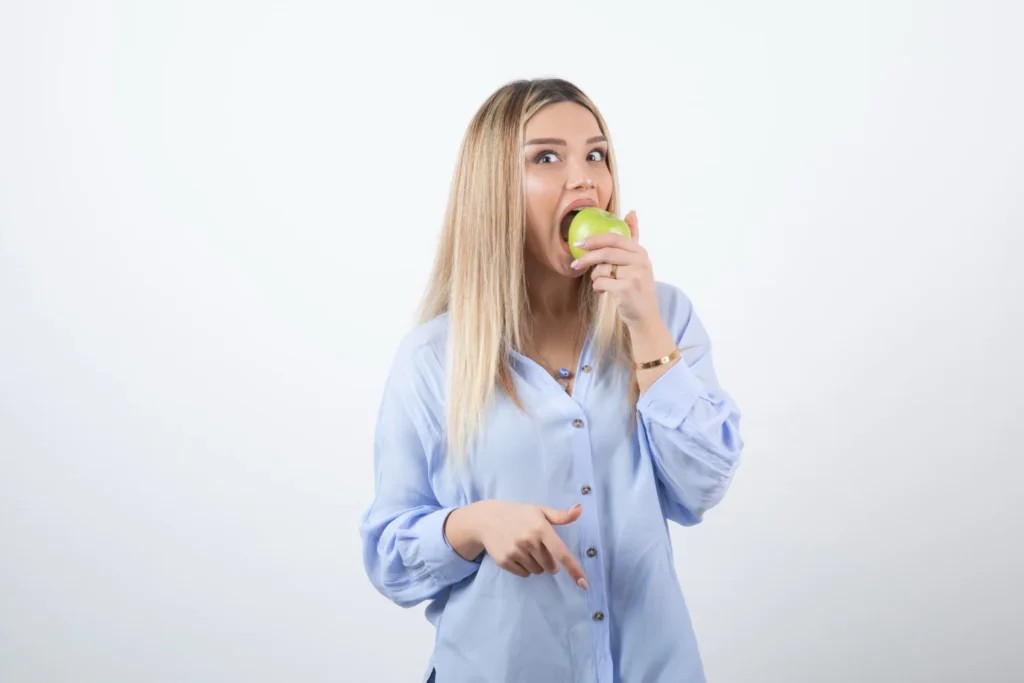Recovering from a tooth extraction can be a delicate process, and knowing what you can and cannot eat is crucial for a smooth recovery. A common question is: “Can I Eat Solid Food 3 Days After Tooth Extraction?” The answer isn’t a simple yes or no, as it depends on several factors. This guide will provide a detailed timeline and food recommendations to help you navigate your post-extraction diet.
The Immediate Post-Extraction Period (First 24 Hours)
In the first 24 hours after your tooth extraction, the primary goal is to allow the blood clot to form and stabilize. This clot is essential for proper healing and prevents complications like dry socket. Therefore, consuming solid foods is generally discouraged during this initial period.
Stick to a liquid or very soft diet, focusing on foods that require minimal to no chewing. Here are some excellent options:
- Smoothies: Blend fruits, vegetables, and yogurt (if tolerated, more on dairy later) for a nutrient-packed meal. Avoid using a straw, as the suction can dislodge the blood clot.
- Soups and Broths: Opt for warm (not hot) and broth-based soups. Avoid soups with chunks or noodles.
- Yogurt: Plain, unsweetened yogurt is a good choice if you can tolerate dairy.
- Applesauce: A gentle and easily digestible option.
- Jell-O: Provides a sweet treat without any chewing required.
Days 2 and 3: Introducing Semi-Solid Foods
By days 2 and 3, if you’re feeling up to it and experiencing minimal pain, you can gradually introduce more solid foods. However, these foods should still be very soft and require little to no chewing. It’s crucial to listen to your body and avoid anything that causes discomfort.
Consider these options:
- Mashed Potatoes: A classic and comforting choice. Add gravy or butter for flavor.
- Scrambled Eggs: Soft and easy to chew, providing a good source of protein.
- Cooked Pasta: Overcooked pasta with a mild sauce is a good option. Avoid anything too acidic.
- Soft Fruits: Bananas, peaches (without the skin), and other very soft fruits are good choices.
Answering the Key Question: Can you eat solid food 3 days after tooth extraction? The short answer is: potentially, but with significant modifications. While you might be able to tolerate very soft foods that barely require chewing, it’s essential to avoid anything hard, crunchy, chewy, or spicy. Think of “solid food” in this context as “densely soft food” rather than a steak or a handful of nuts.
Beyond Day 3: Gradually Expanding Your Diet
After the first few days, you can slowly start adding more solid foods back into your diet, paying close attention to how your extraction site feels. Continue to avoid hard, crunchy, or sticky foods for at least a week or two, or as long as your dentist recommends.
Here are some options to consider as you progress:
- Well-cooked Vegetables: Steamed or boiled vegetables like carrots, squash, and green beans can be added to your diet as they soften.
- Soft Bread: Bread without a hard crust can be dipped in soup or broth to soften it.
- Ground Meat: If you’re craving meat, opt for ground meat that is very soft and moist.
Important Considerations
- Chewing on the Opposite Side: Regardless of the type of food you eat, always chew on the opposite side of your mouth from the extraction site. This will minimize pressure and prevent food from getting lodged in the area.
- Hydration: Stay well-hydrated by drinking plenty of fluids, but avoid using straws.
- Dairy: While dairy products like yogurt and cottage cheese can be good sources of protein, some dentists recommend avoiding dairy in the immediate aftermath of tooth extraction due to the potential for bacterial contamination and the risk of infection. Discuss this with your dentist for personalized advice.
- Listen to Your Body: If you experience any pain, bleeding, or swelling, back off on the solid foods and return to a softer diet.
- Avoid Irritants: Stay away from spicy, acidic, or very hot foods, as they can irritate the extraction site.
Why No Hard or Crunchy Foods?
Hard or crunchy foods can disrupt the healing process in several ways:
- Dislodging the Blood Clot: The primary risk is dislodging the blood clot, leading to dry socket, a painful condition that delays healing.
- Irritating the Extraction Site: Sharp or hard pieces of food can irritate the sensitive tissues around the extraction site.
- Getting Stuck in the Socket: Food particles can become trapped in the extraction socket, leading to infection.
Consulting Your Dentist
The best advice for your post-extraction diet will come from your dentist or oral surgeon. They can assess your specific situation and provide personalized recommendations based on the complexity of your extraction and your individual healing progress. Don’t hesitate to reach out to them with any questions or concerns you may have.
Conclusion
While the timeline for reintroducing solid foods after tooth extraction varies, generally, you should stick to a liquid or very soft diet for the first 24-48 hours. By day 3, you might be able to tolerate very soft, easily chewable foods. Gradually expand your diet as tolerated, always prioritizing gentle chewing on the opposite side of the extraction site and avoiding hard, crunchy, or sticky foods. Following these guidelines and consulting with your dentist will help ensure a smooth and comfortable recovery. Remember, patience and careful attention to your body are key to a successful healing process.
